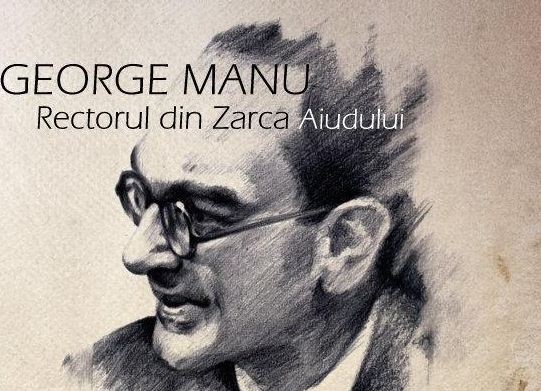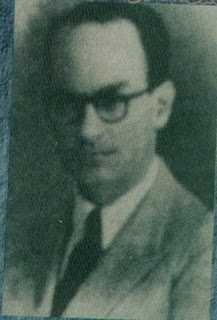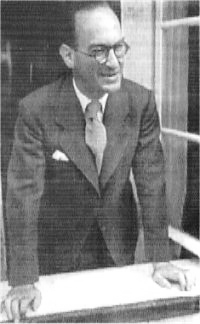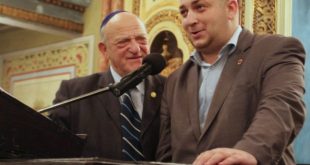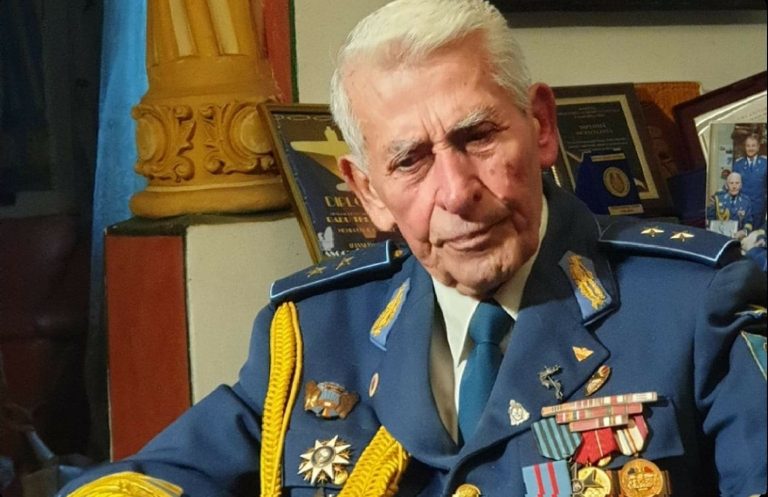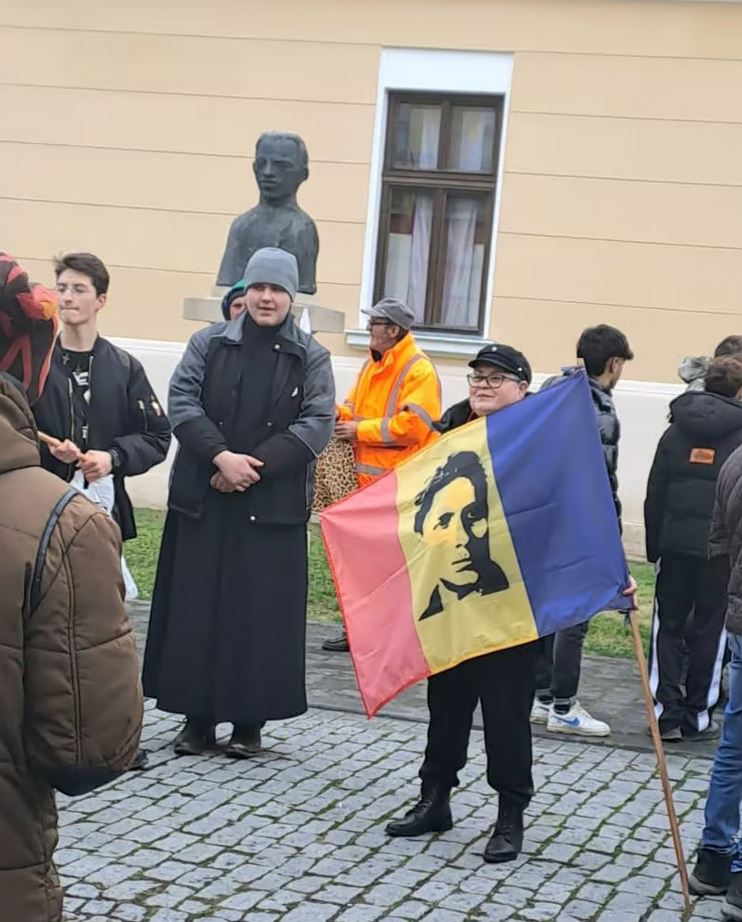Incorect Politic
August 27, 2018
Ultima năzbâtie a individului care are o etnie despre care nu trebuie să știe nimeni, Alexandru Florian, directorul Institutului pentru Studierea Holocaustului în România “Elie Wiesel”, este blocarea numirii lui George Manu ca membru de onoare a Academiei Române.
Dacă nu știi cine-i George Manu, ia-ți un suc, ceva fructe, și chiar dacă e mult text, alocă-ți un sfert de oră să-l cunoști pe fizicianul, legionarul și martirul George Manu:
by Ziaristionline:
George Manu, savant de talie mondiala, a murit in conditii dramatice pe 12 aprilie 1961, la Aiud, unde se afla inchis pentru crezul sau anticomunist.
A lucrat cu celebra laureata Nobel Marie Curie, cu care si-a si dat doctoratul, la Universitatea din Paris, in 1933, cu teza “Cercetări asupra absorbţiei razelor alfa”. Este autorul primului “Tratat de fizică nucleară” din Romania, editat în 1940 sub egida Academiei Române si care continea capitole consacrate: structura atomului, structura nucleului, momentele nucleare si radioactivitatea.
Provenit din familia Cantacuzinilor si inzestrat cu o inteligenta remarcabila, profesorul George Manu a fost si un fin geopolitician.
El a prevazut in mod formidabil ce avea sa se intampla cu Romania dupa ocupatia sovietica, explicand Occidentului care sunt tintele Rusiei in zona – ocuparea Gurilor Dunarii si accesul la Balcani – intr-o lucrare antologica, scrisa in engleza si transmisa Ambasadelor SUA si al Marii Britanii, cu un titlu in care foloseste printre primii din lume sintagma “Cortina de Fier” (Vedeti/See Profesorul George Manu: “Pentru a-si asigura dominaţia în bazinul dunărean şi Balcani, ruşii trebuie în mod necesar să domine în România”. “În spatele Cortinei de Fier – România sub ocupaţie rusească” RO/ENG BEHIND THE IRON CURTAIN). Profesorul George Manu a fost membru corespondent al Academiei de Științe din România începând cu 21 decembrie 1935.
Pe 19 octombrie 2011, Prezidiul Academiei Române voteaza si aproba in plen propunerea făcută de Academicianul Horia Scutaru ca George Manu sa devina membru de onoare post-mortem al Academiei Romane (vedeti mai jos Documentul).
Pe 11 noiembrie 2011, Agentia Mediafax anunta ca in cadrul alegerilor Academiei Romane urmeaza sa fie votata si numirea lui George Manu ca membru post-mortem. Dar, stupoare! Acest lucru nu se mai intampla, dupa cum se vede si pe site-ul oficial al Academiei. Conform Raportului anual pe 2011 al Institutului de trista amintire “Elie Wiesel”, intre timp Academia fusese speriata cu adresa oficiala cu nr. 618/26.10.2011 prin care se solicita “reanalizarea deciziei ca George Manu să fie desemnat membru post-mortem al Academiei Române.
Acest lucru întrucât a fost membru al Mişcării Legioanare şi totodată tinandu-se cont de adeziunea ideologică şi politică a sus-numitului la un partid politic de extremă dreapta care promova valori anti-democrate, naţionalist-xenofobe şi anti-semite”.
Cine sa spuna sperioasei Academii Romane ca in 17 ianuarie 2000, Curtea Suprema de Justitie a Romaniei il reabilitase pe George Manu, considerand irevocabil ca acuzatiile si condamnarea pentru „uneltire contra ordinii sociale” si rebeliune contra statului (comunist/bolsevic) au avut un caracter politic!?
Care fusese “vina” lui Manu? Participase activ la Miscarea nationala de rezistenta anticomunista.
Practic, Institutul in cauza repusese “pe rol” condamnarea bolsevica a genialului savant George Manu, care a dus apoi la uciderea sa in celulele de exterminare a elitei romanesti de la Aiud.
Demersul directorului Institutului “Elie Wiesel”, un anume Alexandru Florian, un personaj cu evidente probleme de diverse naturi, este cu atat mai ticalos cu cat unul dintre prietenii cei mai buni din lumea stiintifica ai lui George Manu a fost cercetatorul evreu Radu Grigorovici, unul dintre inimosii revolutionari din 1989 ajuns apoi vicepresedinte al Academiei Romane.
Ziaristi Online va prezinta Propunerea Academiei Romane:
GHEORGHE MANU
(n. 13 februarie 1903, Bucureşti – d. 12 aprilie 1961, Aiud)
Fizicianul
George Manu îsi începe pregătirea scolară ca elev particular, după un program făcut de bunicul său, generalul Manu. Savantul chimist Longinescu sau părintele Chiricută – erau adusi cu trăsura la casa Manu pentru a preda lectii unui singur elev. Instructia, bazată pe memoria sa prodigioasă, este enciclopedică.
După studiile la Facultatea de Stiinte a Universitătii din Bucuresti, obtine diplome în fizico-chimie si matematici. In 1925, pleacă în Franta si obtine în anul următor un certificat de studii superioare în chimie fizică si radioactivitate la Facultatea de Stiinte din Paris.
Între 1927-1934 lucrează la elaborarea tezei sale de doctorat în laboratorul d-nei Marie Curie, cu titlul: “Recherches sur l’absorption des rayons alpha” (“Cercetări asupra absorbtiei razelor alpha”). Frecventează în paralel cursurile lui Loius de Broglie, Paul Langevin, E. Bloch si altii la Sorbona si la College de France. Domeniul abordat era pe atunci complet nou: “absorbtia radiatiei alpha în materie”.
Cercetările asupra absorbţiei radiaţiei alfa în materie întreprinse de Gheorghe Manu la Institut du Radium cuprind determinări experimentale foarte precise şi interpretarea lor teoretică în cadrul modelelor existente.
Publică o serie de comunicări în : “Comptes Rendus de l’Academie des Sciences Paris”:
– Sur le ralentissement des rayons alpha dans l’air;
– Le ralentissement des rayons alpha dans l’air et la theorie de Bethe;
– Sur le ralentissement des rayons alpha dans l’hydrogene;
– Sur le ralentissement des rayons alpha. Comparaison entre la theorie et l’experience.
George Manu îsi sustine teza de doctorat la 5 iulie 1933 la Universitatea din Paris, comisia fiind formată din Marie Curie – presedinte, Jean Perrin si A. Debieme – membri.
Teza intitulata
Cercetări asupra absorbţiei razelor alfa (Recherches sur l’absorption des rayons α), e publicată în “Annales de Physique, seria XI, tome I, pag. 407-531).
Era cea mai completă investigaţie a interacţiei radiaţiei alfa cu materia, un subiect nou şi de mare interes, fiind citată extensiv.Întreprinzând o generalizare teoretică a rezultatelor experimentale obtinute, G. Manu trasează diagramele de variatie a parcursului radiatiilor corpusculare (protoni si particule alpha) în functie de vitezele initiale.
“Sur l’absorption des rayons a de les rayons H par la matiére, parcours pouvoirs de ralentissement”.
Doamna Marie Curie îi propune să rămână definitiv în laboratoarele institutului de radioactivitate, dar G. Manu revine în tară.
La 1 noiembrie 1935 ia în primire functia de asistent la Catedra de Fizică moleculară, Acustică si Optică (a profesorului Eugen Bădărău), de la Facultatea de Stiinte a Universitătii Bucuresti. Aici leagă o prietenie de o viată cu Serban si cu Radu Titeica – ultimul fiind asistent la aceeasi catedră.
Cercetări experimentale de fizică nucleară erau imposibil de realizat la Facultatea de Ştiinţe din Bucureşti, unde lipsea cu totul infrastructura necesară.
A continuat să publice (1937-1940) lucrări de analiză a unor date experimentale proprii anterioare şi din literatură, dezvoltând latura teoretică, în dialog de idei cu prietenul Şerban Ţiţeica, asistent suplinitor la Politehnică.
La Facultatea de Ştiinţe nu existau nici măcar cursuri de fizică atomică sau fizică nucleară; iar Manu, ca simplu asistent la Catedra de Fizică Moleculară, Acustică şi Optică, nu putea ţine decât seminarii sau lucrări practice cu studenţii. Cum cursul predat de Eugen Bădărău includea un semestru de spectroscopie, Gheorghe Manu, ajutat de Radu Grigorovici, a amenajat într-o încăpere din subsol un modest laborator de fizică atomică pentru studenţi.
A ţinut numeroase prelegeri şi comunicări la Societatea Română de Fizică, al cărei secretar a fost (1936-1945).
Subiectele, alese din domeniul fizicii nucleare, erau de mare actualitate şi noi pentru auditoriu:
transmutări prin raze α şi neutronul, transmutări prin particule accelerate, pozitroni, radioelemente artificiale, structura şi stabilitatea nucleului, date noi despre razele cosmice, despre parcursul particulelor de transmutare, transmutarea uraniului şi toriului, momente nucleare…
Pe lângă comunicări de strictă specialitate, G. Manu a publicat în revista Natura” articole de interes mai general:
“Razele cosmice” (1935), “Evolutia ideilor în fizică de la 1800 până azi” (1936).
Profesorul Gheorghe Titeica (profesor la Politehnică si la Facultatea de Matematică, care l-a cunoscut pe acest condotier al stiintei de avangardă de la fiii săi) l-a sfătuit pe G. Manu să strângă aceste prelegeri într-un volum. Astfel a apărut volumul I din primul Tratat de fizică nucleară, (isotopi, momente nucleare, radioactivitate) care continea capitole consacrate: structura atomului, structura nucleului, momentele nucleare si radioactivitatea, editat în 1940 sub egida Academiei Române, ca monografie stiintifică la Editura-librărie Ion O. Gorjanu, cu prefată de Horia Hulubei, în 170 de pagini si un număr impresionant de diagrame si figuri explicative.
Volumul II urma să dezvolte probleme legate de transmutările nucleare, iar volumul III teoria nucleului. Acestea au rămas undeva în note si manuscrise si au fost ridicate la vreo perchezitie si nu s-au mai putut publica.
Comemorare la 50 de ani de la moarte
Fam. Serban Manu si Editura Mica Valahie au rganizat o manifestare prilejuita de implinirea a 50 de ani de la moartea in inchisoarea Aiud a lui George Manu, personalitate marcanta a culturii si stiintei romanesti, un luptator al Miscarii de Rezistenta Anticomunista dupa 1945.
Au evocat personalitatea lui GEORGE MANU si au prezentat lucrari:
Acad. DAN BERINDEI
Acad. FLORIN CONSTANTINIU
Acad. DINU C. GIURESCU
Acad. IOAN SCURTU
Prof. univ. dr. GH. BUZATU
Cu aceasta ocazie au fost lansate lucrarile:
– IN SPATELE CORTINEI DE FIER – Romania sub ocupatie ruseasca, scrisa de GEORGE MANU in perioada 1945-1947 in limba engleza si trimisa ambasadelor SUA si Marea Britanie pentru sustinerea cauzei Romaniei.
– GEORGE MANU SI TARA LUI – Eseu subiectiv, autor Silviu B. Moldovan, Editura Mica Valahie
Evenimentul a avut loc la CASA UNIVERSITARILOR
strada Dionisie Lupu nr. 46
Vineri, 24 iunie 2011, ora 17,00
Propunere făcută de Acad. Horia Scutaru şi aprobată de Prezidiul Academiei Române în 19.10.2011
Ziaristi Online va prezinta mai jos, printr-o analiza remarcabila si previzionara a profesorului George Manu, si cateva dintre motivele pentru care n-am scapat de bolsevici nici pana azi:
Soviet Communization of Romania
Today’s post reproduces an article that, according to the official archives, was written by George Manu in 1947. The article analyses the developments in Romania after the end of WWII. According to a note, Manu had handed the article to Col. John R. Lovell – military attaché at the United States legation in Bucharest, Romania in 1946 – 1949. The author’s intention was to get the article published in American newspapers.
Some parts of the text are missing (and marked accordingly) because they were not visible – the text was edited starting from scanned images of the original documents.
Abrupt communization in the Russian zone
The political change accomplished in Romania represents a link in a general scheme of abrupt communization which is now being achieved in the entire Russian zone of influence in Europe. Indeed, until the Paris Economic Conference clearly revealed in July past that the Continent was split into two camps, the Russians had persistently attempted to convince Western public opinion that the governments they had imposed upon the countries submitted to their control were not purely communist ones. In fact, these governments were supported by coalitions of parties or small groups led by the Communists but bearing reassuring names like “National Union” in Poland, “National Democratic Front” in Rumania, or Fatherland’s Front” in Bulgaria. The coalitions sometimes happened to comprise determined anti-communist parties or personalities who had been constrained to collaborate under American or British pressure. At that time the Western powers still acted under the illusive outlook that had prevailed at Teheran, Yalta and Potsdam, according to which Communism could be used as a candid ally against Fascism. Thus, Mr. Mikolajczyk was induced to enter the Polish government, M. Subasich to trust Marshal Tito’s good faith, Messrs. Tildy and Nagy to give up the administration of Hungary to the communists, and M. Petkov to act as minister of foreign affairs at Sofia. Moreover, M. Maniu’s refusal to compromise with the Rumanian Communists was openly qualified as narrow-minded obstinacy. The Russians fully availed themselves of this Anglo-Saxon naivety and, under the cover of the broad democratic conditions thus set on foot, methodically promoted their plan of gradual communization. Besides, the resistance of the middle classes and the farmers was discouraged and the reluctant but yet actual collaboration of the anti-communist parties only helped to compromise and dismember them. The best example was that of the Hungarian Smallholders Party.
During 1947 the Russians apparently became less interested in concealing their purposes. They probably considered the communist regime imposed in their zone of influence strong enough to throw off the mask of democracy. Consequently, the anti-communist parties, whether collaborating or not, were involved in “fascist” conspiracies incidentally discovered by the Russian secret police, evicted from government, implicated in repeated trials, dissolved and outlawed. Messrs. Mikolajczyk and Nagy were compelled to flee abroad, nothing was ever heard of M. Subasich, M. Petkov was hanged and M. Maniu sentenced to life imprisonment. The only country where this operation has not yet been carried through is Czechoslovakia, seemingly on account of M. Benes widespread international relations. Nevertheless, “fascist” conspiracies have already been mentioned, M. Ursiny, Slovakian vice premier of the Gottwald cabinet, has been compelled to resign, and the regional government of Slovakia is now presided over by a Communist.
M. Tatarescu’s dismissal
The changes which recently affected the composition of the Groza cabinet illustrated this process of communization. As, on March 6, 1945, M. Vyshinski in his usual rude manner imposed upon the King of Rumania the appointment of that puppet government, he only [missing text]. In 1942, under Marshal Antonescu, M. Tatarescu was the only prime minister who attended the festivities held in Chişinău, chief city of Bessarabia, in order to commemorate the liberation of that province. Three years later, probably fearing his being prosecuted as a war criminal, M. Tatarescu entered the Groza cabinet as vice premier and minister of Foreign Affairs, subsequently playing the part imposed upon him by Russia. However, in May 1947 he attempted to oppose the first measures of frank communization proposed by his communist colleagues. The latter bluntly rejected his objections and asked him to resign. At that time Russia was still interested in fooling Western opinion and still needed the presence in the Rumanian government of a pawn assumingly representing the middle classes. Consequently, M. Tatarescu was asked to withdraw his objections and allowed to remain in office. Six months later, as the partition of Europe had become an accomplished fact, the Russians had no more reason to keep M. Tatarescu and abandoned him to his own fate.
Mme Ana Pauker
Besides, the strained international situation demanded a narrower Russian control over Rumania’s foreign policy. Indeed, Rumania commands all Russian ways of access and expansion to the Mediterranean. Being now engaged in a war of nerves and a diplomatic offensive against Italy, Greece and Turkey, which could at any moment involve her in international complications, Russia is bound to assure her backlines and consequently to supervise very strictly Rumania’s foreign relations. In view of this, Russia imposed upon her tools of the Groza government the appointment of Mme Ana Pauker as minister of Foreign Affairs.
Mme Ana Pauker was born in Rumania of foreign parents about 55 years ago. She first married a bookseller and later Marcel Pauker, a communist engineer who worked in Germany for a certain time and later went to Russia where he was shot in 1936 under the charge of being a Trotzkyst. His wife is said to have denounced him. Mme Ana Pauker spent several years in Russia where she became a Soviet subject, was a member of the former Comintern and was appointed a honorary general in the Red Army. She returned to Rumania in 1944 as communist chief leader and, in September 1947, attended the Warsaw Conference of the Communist Parties which re-organized Comintern. Thus, Mme Ana Pauker may be safely trusted by the Russians as their most reliable representative in the Rumanian Communist Party.
As soon as she was appointed minister of Foreign Affairs, Mme Ana Pauker ordered all the officials of the ministry to leave their offices. The latter were locked for about ten days and searched one by one. All the documents and the slightest scraps of paper were meticulously examined by Mme Pauker’s trusted persons under her own superintendence. As a result, 170 diplomatists and officials were dismissed within a week. Few days later several dozen more were compelled to resign. M. Tătărescu having previously dismissed 240 persons the Rumanian diplomatic service was entirely removed. They were constituted by communist outsiders, most of them belonging to the alien minorities, who had gone through a special school the Communist Party had organized a fairly long time previously under Russian supervision. The Russian purpose of eradicating any Rumanian outlook from the Rumanian ministry of Foreign Affairs was thus accomplished. Mme Pauker will now conduct this ministry as a Russian official acting at the [missing text]. Mme Pauker has been entrusted with the task of carrying through the negotiations for the entry of Rumania into the future Soviet Danubian Confederation. Actually, these negotiations have already reached an advanced stage. The Rumanian prime minister, M. Petre Groza, paid official visits to Budapest, Belgrade, Sofia and Prague during the summer of 1947, and signed political, economic and cultural agreements. The Bulgarian prime minister Dimitrov paid an official visit to Yugoslavia in August 1947 and closed at Bled an agreement with Marshal Tito preparing the creation of a Greater Yugoslavia comprising Bulgaria. During the last days of October 1947, M. Groza and Marshal Tito met secretly in a country house at Banloc, a Rumanian village near the Yugoslavian frontier, and had long negotiations which alterned with enormous revelry. Few weeks later, General Dinnyes, the Hungarian prime minister, travelled to Bucharest while Marshall Tito and M. Dimitrov met again in Bulgaria.
The future Danubian Confederation as contemplated by Russia should comprise Czechoslovakia, Hungary, Rumania, Yugoslavia and Bulgaria. The latter two countries would be probably united into a Greater Yugoslavia which would become in this manner the most important partner in the future Confederation and would naturally be entrusted with its leadership. Thus, Belgrade would become the siege of both the central government of the Confederation and the central committee of the recently re-established Communist International. Russia would dispose on the Danube of a strong first-line position watched by her trustworthy tool, Marshal Tito, and enabling her to interfere with European affairs without too openly unmasking herself. Besides, she would definitively establish her domination up to the gates of Vienna and Trieste without disclosing her imperialistic ambitions as would be the case if the concerned countries were merely invited to enter the Soviet Union as “free and independent” partners, like the Ukraine or Bielo-Russia. The future Confederation would comprise 60 million inhabitants of whom 35 million Slavs and 25 million non-Slavs. The former might be used in order to crush the national resistance of the latter, Rumanians and Hungarians who have as yet brought much trouble to the Russian plans by their stubborn opposition, in spite of their being governed by subservient tools.
A Soviet Kingdom?
In fact, another problem may trouble the Russian plans. Rumania still is a Kingdom and King Michael still keeps on his throne. According to the Constitution, he might appoint or dismiss the government at his will and thus legally overthrow the communist regime as soon as an opportunity would occur. In doing this, he would certainly be supported by all the Rumanian people. As a matter of fact, King Michael is beloved by his subjects since he attempted to dismiss the Groza government in August 1945, in compliance with an Anglo-American note asserting that this government did not fulfil the conditions settled at Yalta. Soon after, the Western Powers abandoned the King to his own resources and, according to the Moscow agreement of December 1945, obliged him to resume relations with a government they had attempted to overthrow four months previously. Being thus deceived by the Western powers, the King has become very careful. He was often compelled to yield before Russian pressure and to sanction measures he strongly disapproved. None the less, it seems unlikely that the Russians might accept the idea of a Soviet Kingdom. Thus, they will most probably constrain King Michael to abdicate as soon as they will be in a position to realize their projects concerning the Danubian Confederation that would be the last political change undergone by Rumania before her final disappearance into the Soviet world. At that point, Rumania and the whole of South – Eastern Europe would presumptively become free from fear, as nothing worse could ever happen to them.
Bucharest
25th of November 1947
George Manu – a biography that quotes the Introductory Study written by Silviu B. Moldovan
George (Gheorghe) Manu was born on February 13, 1903. Through his parents Ioan (Iancu) Manu and Elisabeta (Zeta Cantacuzino) he descended directly from Prince Şerban Cantacuzino and Prince Constantin Brâncovean. He was the grandson of General Gheorghe Manu, a hero of the Romanian War for Independence and founder of the Romanian artillery.
George Manu graduated from high school in 1921 (the last two grades in France). In 1925 he was awarded double major (both in Physical & Chemical Sciences and Mathematics) from the Department of Sciences – University of Bucharest. One year later he was awarded the Certificate of Higher Education in Physical Chemistry and Radioactivity from the Department of Sciences with the University of Paris.
During 1927 – 1933 he worked for the Curie Laboratory in Paris (The Radium Institute). He attended courses with the University of Paris, Sorbonne and with Collège de France. In 1933 he was awarded a doctoral degree (Summa cum Laudae) from the University of Paris with the doctoral thesis Research on the Alpha – Ray Absorption.
George Manu declined the offer to work for the Curie Laboratory in France and decided to return to Romania. In November 1935 he started to work as an Assistant Professor for the Faculty of Sciences in Bucharest. In 1940 he published two scientific works: Nuclear Physics as part of the Series of Scientific Monographs of the Romanian Academy and Isotopes, Nuclear Spins and Radioactivity. In April 1945 he was awarded a tenure position in Radioactivity with the newly established Structure of Matter Department.
Based on his political option, George Manu was a legionary. He had joined the Legionary Movement in 1937, upon his return from Paris, after completion of his studies. Due to his political adherence he came under scrutiny by the commission in charge with “filtering out” legionaries. For lack of solid accusations against him, the University Chancellor applied a one-year suspension sanction. At this juncture Manu decided to give up his academic career and joined the newly created National Resistance Movement.
The most concrete and uncontestable result of Manu’s activity in the National Resistance Movement is the clandestine work Behind the Iron Curtain – Rumania under Russian occupation that he wrote under pseudonym (Testis Dacicus).
In 1946 the Military Supreme Court for Cassation and Justice heard the case of the “subversive organizations”. According to Decision no. 2 dated November 18, 1946, the Court sentenced 90 persons, including “Professor Manu Gheorghe” (according to the minutes) who was charged with conspiracy to destroy state unity, rebellion and armed insurrection. The Court unanimously decided to sentence him to life-long forced labour with mitigating circumstances for conspiracy, 10 years of rigorous imprisonment, 5 years deprivation of civil rights, 50,000 Lei in trial expenses for rebellion and acquittal of any penalty for the armed insurrection charge.
For another year and a half George Manu continued his clandestine activity with dwindling results. On March 21, 1948 he eventually got arrested upon his return to Bucharest after a failed attempt to cross the border.
One of the main “evidences” brought in support of the high treason charge was Behind the Iron Curtain – a work wrongly considered “intelligence report” that allegedly provided foreign powers with important state secrets. Contrary to these accusations, readers of the book will realize that George Manu presented unclassified information that contributed to a better understanding of Romania’s situation.
On January 17, 2000 the Supreme Court of Justice discharged George Manu of the previous accusations of conspiracy to destroy state unity and rebellion.
George Manu died on April 12, 1961 at the prison in Aiud, after having impeccably endured detention. The cause of his death is still a controversial issue – according to some reports he died because of untreated tuberculosis – the prison’s commander Gheorghe Crăciun had conditioned medical treatment upon Manu’s cooperation in the detainees’ reeducation. Manu had also rejected previous captatio benevolentiae of the authorities, attempts that included an offer to work in a nuclear research center in the Soviet Union. At the same time, Manu never missed an opportunity to ease the sufferings of other political detainees.
Source: Romanian Voices
Doc: Marturisitorii
 Incorect Politic O Publicație Dizidentă
Incorect Politic O Publicație Dizidentă
